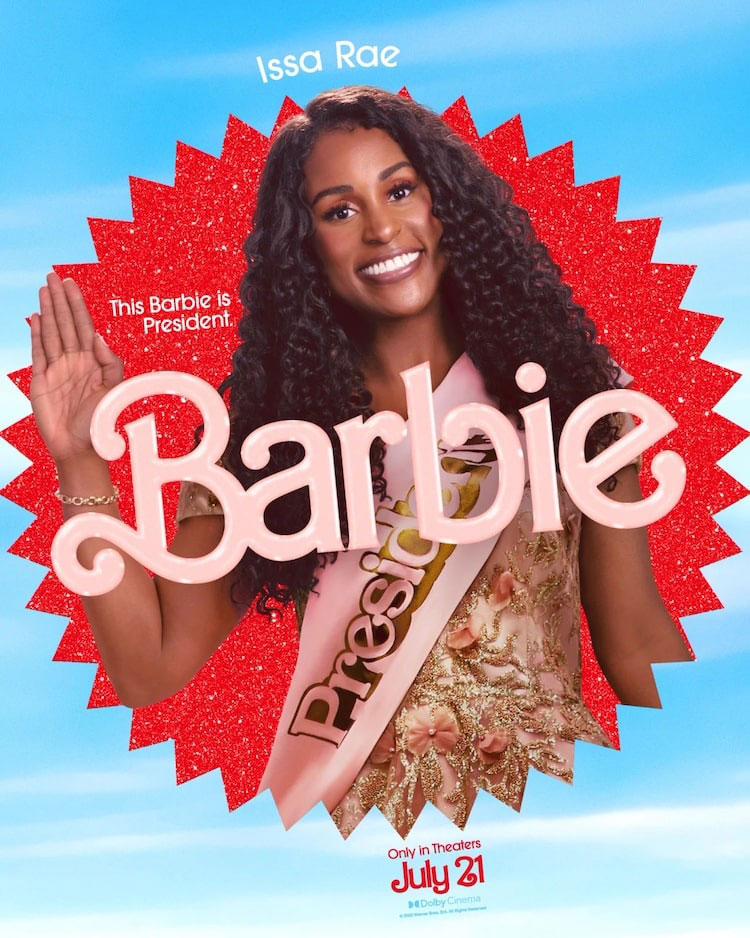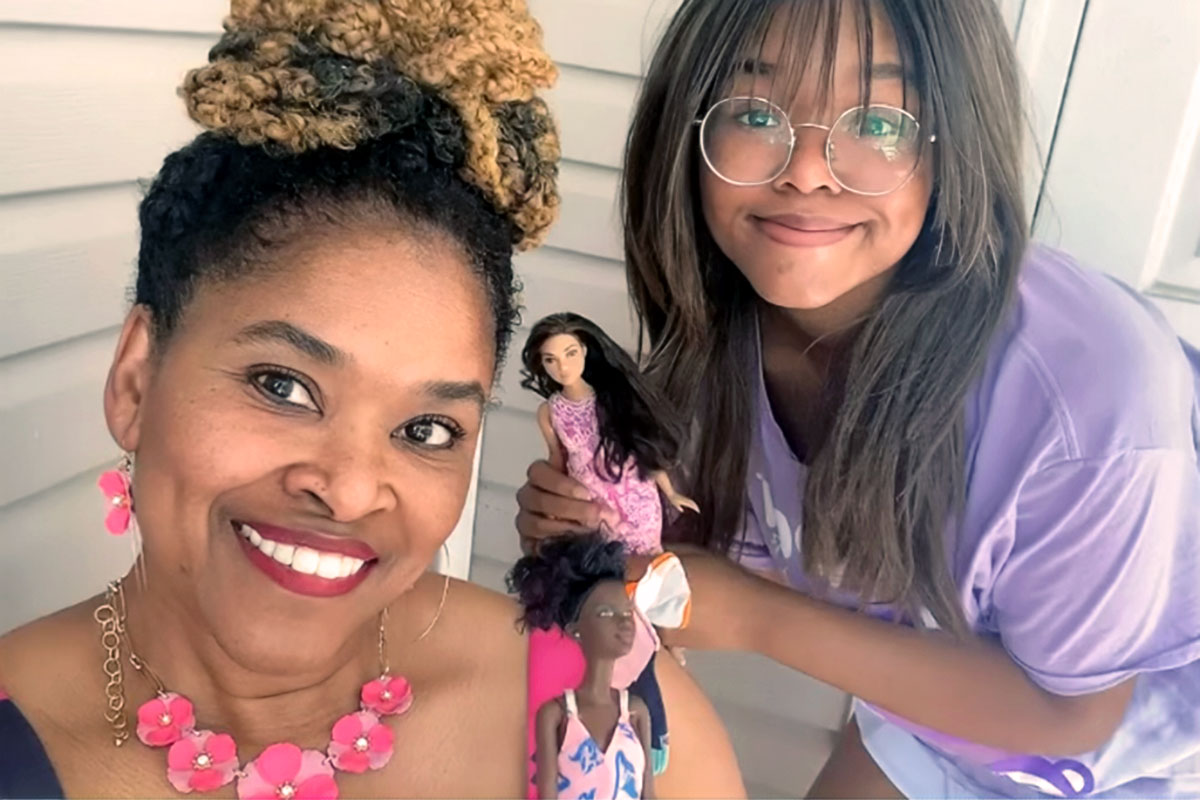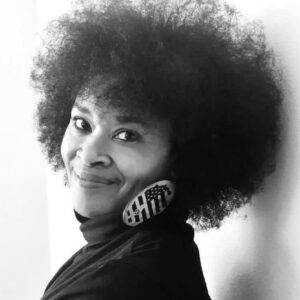Mothering two imaginative girls, Jasmine and Natalie, I spent many years watching them play with Barbie dolls. Seeing their creative minds plan soirées at the Barbie mansion, towering in a corner of Natalie’s bedroom, was like watching a sitcom. Sometimes Ken and his friends were fortunate enough to make it out of the toy box to join the fun, but usually, it was all about the girls. From brunches to pool parties or road trips in luxury convertibles, my daughters’ dolls lived well and without limitations.

This past Sunday, Natalie and I fancied up in cute, pink dresses for a grand outing we’d been anticipating for months, the “Barbie” movie. She invited two of her own Barbies, Sasha and Marla, whom she and Jasmine used to play with, to go with us. During the drive to Malco Grandview Cinema & IMAX, she dressed them for the show.
Cruising down Lakeland to I-55, from Flowood to Madison, all four of us vibed in our pastel, floral prints while listening to Lizzo, Dua Lipa, Nikki Minaj, Ice Spice and Aqua. The only missing player was Jasmine, who lives in Detroit and had seen the movie three days earlier.
As we walked into Malco, Natalie and I instantly became participants in a cross-generational gathering of women with a cultural connection steeped in mutual stories and experiences. Each girl and woman self-represented in a communal fashion show featuring elaborate, colorful hairstyles; dresses ranging from casual to formal; Barbie T-shirts; pink shorts; and shoes symbolic of inclusivity—heels, Converse, sandals and combat boots. It felt like a pre-party before the main event.
The hype was on the button.
Every second of the movie evinces brilliant writing, critical consciousness and cultural competence. The story of Barbie is contextualized in such a way that every victory for and atrocity against women is equally exhilarating and exhausting.
Barbie’s world is highly functional, productive and prosperous when women are in control and in charge of their own lives, without interference from a fragile, egotistical and overly sensitive patriarchy. Ensuing feelings of insecurity and personal inadequacy trigger male aggression and a scathing attack on women’s personhood.
Most disturbing is the real-world setback of women’s rights playing out on America’s national stage and systemic sabotaging of decades of hard labor.

The most ironic point in the movie comes when Ruth Handler’s ghost makes the iconic statement, “We mothers stand still so our daughters can look back to see how far they have come.”
As a mom, I watched the movie’s hostile-takeover scenes, imagining myself in my daughter’s shoes, young women stripped of rights that were guaranteed to me when I was their age. The clock’s hands should not move backward.
Through mom lenses, the “Barbie” movie’s celebration of women’s landmark achievements and the opportunities available to my daughters energized me. Positions such as president, doctor, lawyer, and journalist were not as easily attainable for women when I was Jasmine’s and Natalie’s age. Although the writers spotlight progress to an extent, they are creative in reversing roles, presenting a world that excludes men, while also reflecting the disparaging circumstances we all face when any group is the target of gender inequality.
Today’s Barbie Symbolizes Diversity, Equity and Inclusion
I’m old enough to have witnessed Barbie’s transition from largely static to admirably variable. As a girl, I didn’t own any Barbie dolls, just baby dolls, a problematic cultural standard once heavily forced onto girls, as addressed in the movie’s introduction. My mother didn’t have a problem with Barbies. Representation mattered to her. She insisted that all of my dolls look like me. To this day, I’m grateful to her for caring about my identity formation.
Where I was growing up in Brookhaven, Miss., a Black Barbie doll on a toy store shelf did not come a dime a dozen. By the time I became a mother, a more relatable Barbie had emerged, one that I, unlike my mother, could comfortably introduce to Jasmine and Natalie.
Fortunately, my daughters experienced a Barbie culture inclusive of not only skin tones in their likeness, but also varying hair textures, facial features and body types. More importantly, Barbie became a symbol of diversity, equity and inclusion, encompassing the lives and stories of women from an increased intersectional perspective.

“Barbie” the movie portrayed a group of women with lifestyles identical to Jasmine and Natalie’s Barbie dolls. Watching the film, I thought about my little girls sitting on the floor with Barbie clothing, shoes, accessories, sports cars and other luxuries scattered about.
At certain points during the movie, I laughed and cried, rejoicing in knowing that my daughters were doing more than just playing with dolls. They were creating a world that young women owned—their Barbies with no glass ceilings, no threats to their personhood. Sitting at the brunch tables, swimming at the pool parties and driving the colorful sports cars were professional Black women, happy and thriving. Through their engagement with Barbie dolls, my girls were creating a world that they were raised to believe is attainable for them.
Jasmine and Natalie are college-educated adults now. Neither is clueless to the obstacles set against them. Both are empowered to self-advocate and expect no less than what they have worked hard to attain. As their mom, I can say that every second of the “Barbie” movie resonated with me because our lives and stories were well-represented.
This MFP Voices essay does not necessarily represent the views of the Mississippi Journalism and Education Group, the Mississippi Free Press, its staff or board members. To submit an opinion for the MFP Voices section, send up to 1,200 words and sources fact-checking the included information to azia@mississippifreepress.org. We welcome a wide variety of viewpoints.






